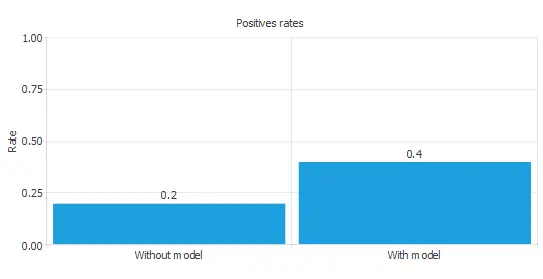Targeting in marketing is a strategy that divides a large market into smaller segments to concentrate on a particular group of customers within that audience.
Companies can analyze age, gender, interests, and other features from clients to target specific customers.
This allows us to design marketing campaigns with a higher conversion rate.
Here, we explain how to use machine learning and Neural Designer to build conversion models and optimize marketing campaigns.
Contents
Objectives
Customer targeting involves identifying people more prone to buy a specific product or service.
The selection of customers is not always as evident as dividing them by a single variable such as age or gender. Indeed, complex combinations of different variables determine prone customers.
Customer targeting requires analyzing numerous features in specific ways relevant to marketing:
- Socio-demographic factors: Gender, age, education…
- Engagement factors: Recency, frequency, monetary…
- Stationary elements: Season, date, time…
- Conversion of the customer.
- Etc.
Benefits
These techniques successfully select potential clients much better than traditional methods.
Benefits for the customer:
BETTER RECOMMENDATIONS
Discover common characteristics between clients to divide them into segments.
LESS DISTURBANCE
Discover the reasons a product fits better in one segment than others.
Benefits for the company:
REDUCED COSTS
Predict which product will be bought by each client to make more efficient campaigns.
INCREASED CONVERSION
Increase the conversion rate of your marketing campaigns.
Approach
The way to target customers is to create a model based on features from customers.
Neural networks can model the correct one given these variables and detect which customers are interested in your products and services.
The following graph illustrates a neural network for customer targeting.

Results
As we have explained before, customer targeting aims to increase conversion rates.
The following example is about a company that wants to sell its products. We can observe the positive rates in the following plot without and with the model.

We can see that only 20% of customers are interested in the products without the model. However, after applying the model, we have selected the more likely customers, and we can see that 40% are truly interested.
In case the company has doubled its sales with the model.
Conclusions
In conclusion, customer targeting enables companies to find the most relevant leads. In consequence, it allows them to invest their marketing resources more efficiently.
It is an economical and fast way to manage existing clients and acquire new ones.








